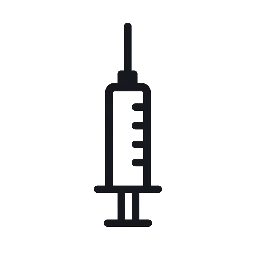Discover how the KLoW Peptide Stack—combining GHK-Cu, TB-500, BPC-157, and KPV—offers advanced, science-based potential for tissue repair, skin rejuvenation, and inflammation modulation in research settings.
1. What Is the KLoW Peptide Stack?
The KLoW blend includes four research-grade peptides:
- GHK-Cu (~50 mg): a copper-binding peptide supporting collagen production and skin remodeling. Empower
- TB-500 (~10 mg): a thymosin beta-4 analog known for promoting cell migration and tissue recovery. Empower
- BPC-157 (~10 mg): supports angiogenesis, tendon and ligament healing, and gut repair. Empower PeptidesPep-
- KPV (~10 mg): a peptide fragment of α-MSH with potent anti-inflammatory and immunomodulatory effects.
This synergistic formulation is typically supplied as an 80 mg lyophilized blend in a 5:1:1:1 ratio (GHK-Cu:TB-500:BPC-157:KPV).
2. Why Researchers Are Using KLoW
Synergy in Diverse Healing Pathways
The stack is valued for its multifaceted support across:
- Tissue and wound repair (TB-500, BPC-157)
- Skin rejuvenation and extracellular matrix support (GHK-Cu)
- Inflammation reduction and immune regulation (KPV)
Applications include soft-tissue injury models, skin repair, post-surgical recovery, gut-brain axis studies, and inflammation modulation.
Protocol Insights from PepPedia
- Dose: 200–500 μg per day total (approx. 0.01–0.025 mL of 20 mg/mL solution)
- Cycle: Typically administered once daily by subcutaneous injection for 4–6 weeks, followed by a 2–4 week break.
- Reconstitution: Use 2–5 mL bacteriostatic water (4 mL gives 20 mg/mL); swirl gently; store refrigerated; discard after ~6 weeks post-reconstitution.
3. What to Expect & Safety Considerations
Anecdotal Reports & Real-World Use
From community discussions:
“Can also add in KPV to get KLoW. Adds in quite a few more benefits.”
Some users suggest dosing based on GHK-Cu and adjusting the rest proportionally:
“You need to decide how much GHK you want daily… most people choose 1–2 mg.”
Cautionary Notes
- The combination is still experimental—no formal clinical trials have validated KLoW in humans.
- Potential side effects may include injection-site reactions, fatigue, or temporary irritability.
- No safety or long-term data exist for this blend; each component may pose unique risks.
- Not approved for therapeutic use. Always designated for research/experimental purposes.
Final Thoughts
The KLoW Peptide Stack holds notable promise in research for harnessing the complementary properties of four regenerative peptides. Researchers leverage its synergistic potential for wound healing, skin remodeling, and inflammation control—though human applications remain theoretical. If you’re incorporating this into a blog aimed at both enthusiasts and professionals, focus on:
- Educating readers about the science behind each peptide
- Explaining the research protocols and dosing framework
- Clearly communicating the experimental nature and safety limitations


